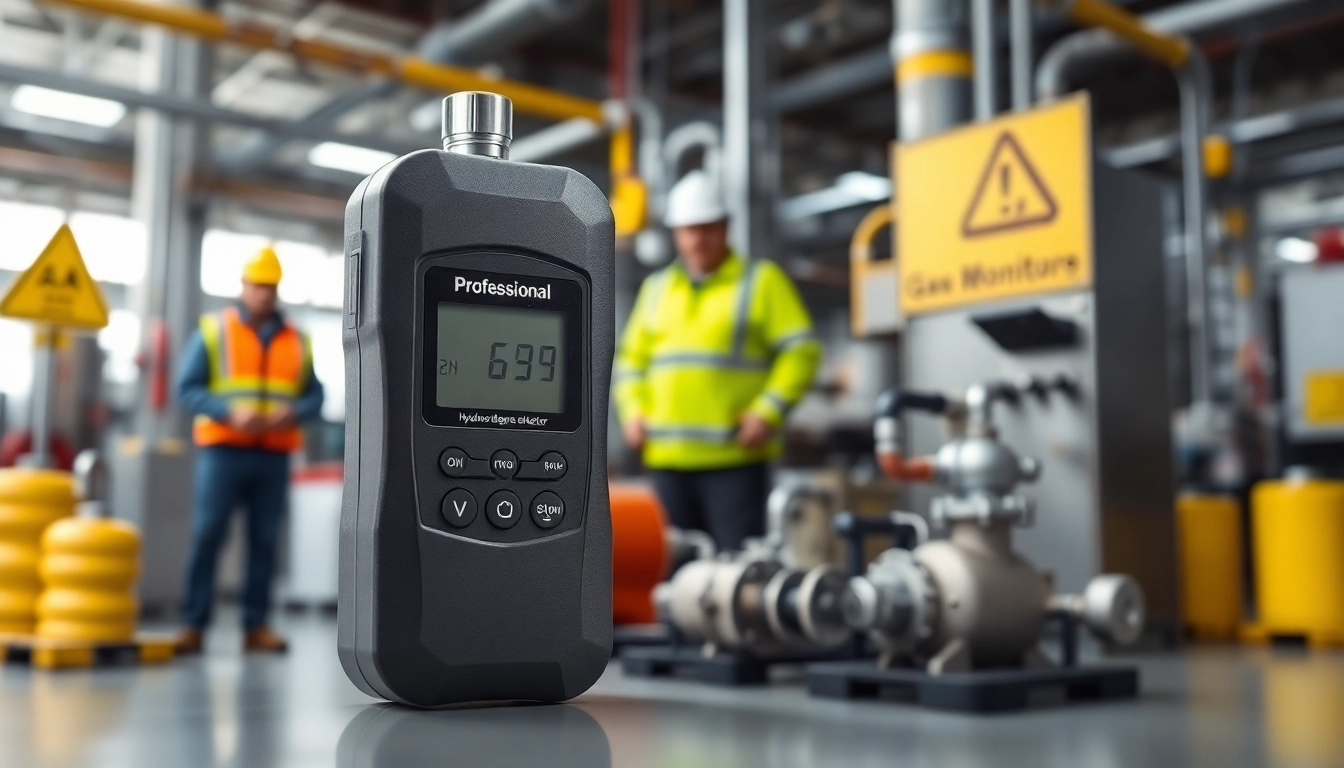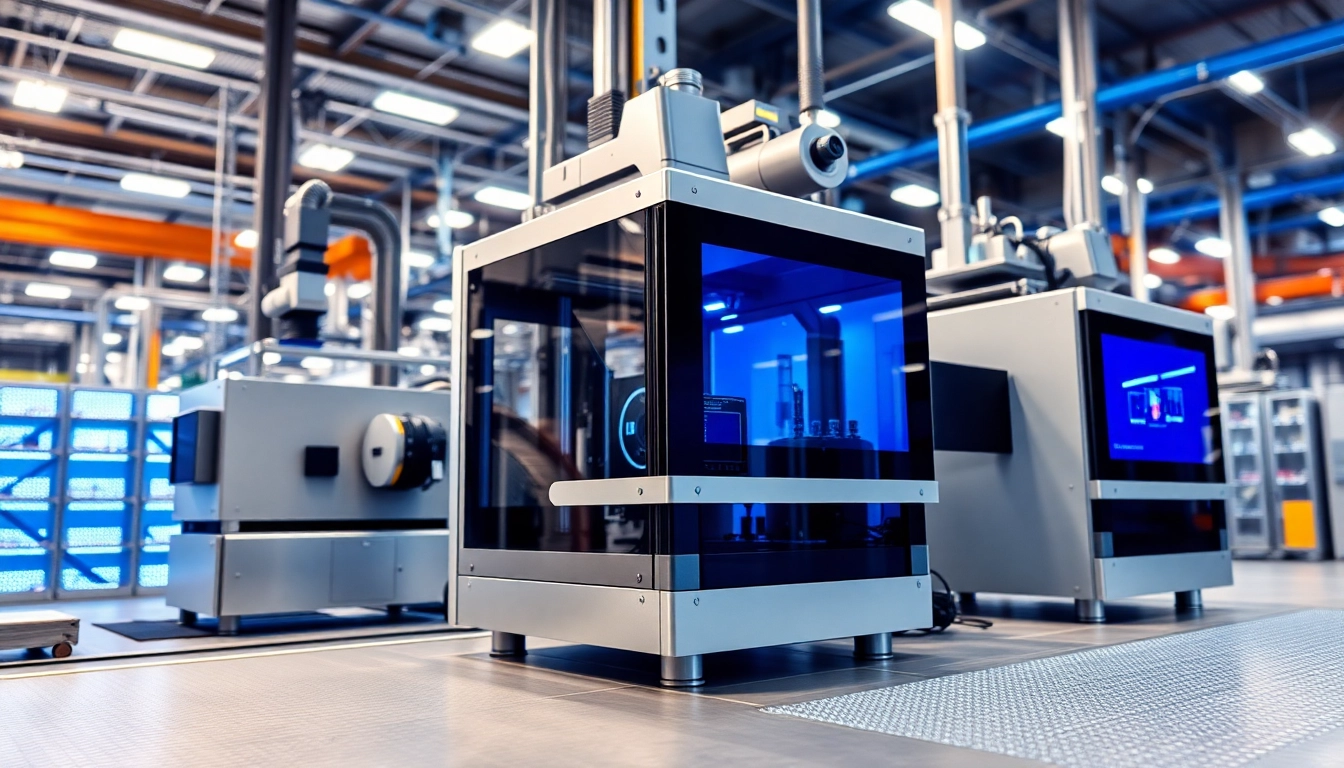Understanding Hydrogen Sulfide Gas
What is Hydrogen Sulfide?
Hydrogen sulfide (H₂S) is a colorless, flammable gas known for its characteristic foul odor, often likened to that of rotten eggs. It is a naturally occurring gas produced from the breakdown of organic matter in the absence of oxygen, thus commonly found in sewers, swamps, and during certain industrial processes. The gas has a higher density than air, making it particularly hazardous as it can accumulate in low-lying areas. Hydrogen sulfide is a compound of sulfur and hydrogen, and while it is used in various industrial applications, it poses significant health risks, making the monitoring of its levels critical.
Health Hazards of Hydrogen Sulfide Exposure
Exposure to hydrogen sulfide can be extremely dangerous. In low concentrations, its effects may include irritation of the eyes, nose, and throat, and symptoms such as headache and fatigue. At higher concentrations, it can lead to more severe health effects including respiratory distress, loss of consciousness, and even death. The Occupational Safety and Health Administration (OSHA) has set a permissible exposure limit (PEL) of 20 parts per million (ppm) for hydrogen sulfide over an eight-hour work shift, with immediate danger at concentrations above 100 ppm. Recognizing these dangers underscores the necessity of using a Hydrogen Sulfide gas detector in environments at risk for exposure.
Common Industries Affected by Hydrogen Sulfide
Several industries are particularly vulnerable to the risks posed by hydrogen sulfide. These include:
- Oil and Gas: Hydrogen sulfide is often encountered during extraction and refining processes.
- Pulp and Paper Manufacturing: The chemical is released during the production of paper from wood.
- Wastewater Treatment: Decomposition in sewage can produce hydrogen sulfide, making it a hazard for workers.
- Mining: H₂S can occur in underground mining operations, particularly during drilling and blasting.
Cognizance of these industries and the potential exposures associated with hydrogen sulfide is fundamental for ensuring worker safety and compliance with health regulations.
Importance of Hydrogen Sulfide Gas Detectors
How Hydrogen Sulfide Gas Detectors Work
Hydrogen sulfide gas detectors are essential devices designed to alert personnel to the presence of H₂S in the environment. These detectors typically work on the principle of electrochemical sensing, where the gas interacts with electrodes within the sensor, generating a current proportional to the concentration of hydrogen sulfide. The device then translates this into a readable output that can trigger alarms or alerts when dangerous levels are detected. The best models are capable of continuous monitoring, providing real-time data to help mitigate risks.
Choosing the Right Hydrogen Sulfide Gas Detector
Selecting an appropriate hydrogen sulfide gas detector requires consideration of several factors:
- Detection Range: Detectors should cover the expected range of H₂S concentrations relevant to the operational environment.
- Response Time: Rapid response times (ideally under 30 seconds) are critical for ensuring safety.
- Calibration Needs: Understand how often the device will need recalibration and the complexity of that process.
- Battery Life: Longer battery life minimizes downtime and ensures continuous protection.
- Portability: Depending on the application, portable units may be necessary for workers in the field.
Making a well-informed choice optimizes safety and enhances compliance with health standards.
Regulatory Requirements for Monitoring Hydrogen Sulfide
Regulatory bodies such as OSHA and the National Institute for Occupational Safety and Health (NIOSH) provide guidelines and standards for monitoring hydrogen sulfide exposure in the workplace. Employers are required to monitor H₂S levels in environments where exposure is possible, ensuring that detection systems are in place, functioning, and compliant with legal and safety standards. Regular audits and checks can help maintain compliance and safeguard worker health effectively.
Installation and Placement of Gas Detectors
Best Practices for Installing Gas Detectors
Effective installation of hydrogen sulfide gas detectors involves adhering to best practices to ensure optimal performance and reliability. Key considerations include:
- Location: Install detectors in areas where hydrogen sulfide is most likely to accumulate, such as near extraction sites or wastewater treatment tanks.
- Height of Installation: Since hydrogen sulfide is heavier than air, detectors should be placed at lower levels but also consider potential airflow which might carry the gas.
- Avoid Obstructions: Ensure that the airflow around the sensor is unobstructed to allow accurate detection.
- Accessibility: Detectors should be accessible for routine maintenance and testing.
Common Mistakes in Detector Placement
Incorrect installation can lead to significant risks and failure to respond efficiently during an emergency. Common mistakes include:
- Misplaced Sensor: Installing detectors too far from potential gas sources can delay detection.
- Ignoring Environmental Conditions: Factors such as temperature and humidity can affect detector accuracy. Sensors should be suitable for the specific environmental conditions.
- Inadequate Maintenance Access: Placing detectors in hard-to-reach areas can hinder essential maintenance checks.
Conducting Effective Site Assessments
Conducting thorough site assessments before installing hydrogen sulfide detectors can ensure optimal safety. This involves:
- Identifying Risk Areas: Map out locations with a history of H₂S releases or potential accumulation.
- Utilizing Wind Patterns: Analyze wind directions and ventilation to better position detectors.
- Consulting with Experts: Engaging with safety professionals can provide insights into the specific needs of your facility.
Maintenance and Calibration of Gas Detection Systems
Routine Maintenance Practices for Detectors
Regular maintenance is crucial for hydrogen sulfide gas detectors to ensure they function effectively. This includes:
- Regular Testing: Conduct operational tests on detectors to confirm their functionality.
- Cleaning: Periodically clean sensors to remove dust and residues that might affect performance.
- Battery Checks: Routinely check and replace batteries as required to avoid unexpected failures.
When to Calibrate Your Hydrogen Sulfide Gas Detector
Calibration is essential to ensure the accuracy of hydrogen sulfide detectors. Typically, calibration should occur:
- After Initial Setup: Post-installation calibration establishes baseline accuracy.
- Regular Intervals: Depending on manufacturer recommendations, detectors should be calibrated at least annually.
- After Significant Environmental Changes: If there are changes in the work environment that might affect detector performance.
Signs of Malfunction in Gas Detection Systems
Identifying issues with hydrogen sulfide detectors early can prevent dangerous situations. Common signs of malfunction include:
- False Alarms: Frequent false alerts may suggest a calibration issue or sensor failure.
- Non-Responsive Units: Detectors failing to activate during testing indicate potential device failure.
- Inconsistent Readings: If readings fluctuate wildly without cause, it may indicate a problem inside the unit.
Case Studies and Real-World Applications
Successful Implementation of Hydrogen Sulfide Detectors
Numerous businesses have successfully implemented hydrogen sulfide detectors to ensure worker safety. One notable example is a coastal oil extraction facility that adopted a comprehensive monitoring system after an incident involving H₂S exposure. By strategically placing detectors at high-risk points and creating an effective response plan, the facility significantly reduced the instances of gas exposure, resulting in an improvement in safety incidents tracked over three years.
Lessons Learned from Industry Incidents
Lessons from past incidents illustrate the importance of proactive measures. One specific case involved a wastewater treatment plant that suffered from exposure-related injuries after failing to regularly calibrate their detectors. The result was a near-fatal incident that could have been avoided had the sensors been routinely assessed and maintained. This incident led to stricter internal policies on maintenance and training, highlighting the need for comprehensive safety protocols.
Future Trends in Gas Detection Technology
The field of gas detection technology continues to evolve. Key trends include:
- Integration of IoT Technology: Modern detectors are increasingly being integrated with IoT features, offering remote monitoring capabilities and data analytics for predictive maintenance.
- Advanced Analytics: Use of machine learning algorithms to analyze past exposure data can lead to enhanced detection accuracy and operational efficiencies.
- Wearable Gas Detectors: Emerging technologies focus on developing portable and wearable gas detectors that provide real-time alerts to workers, improving on-the-job safety.















Leave a Reply